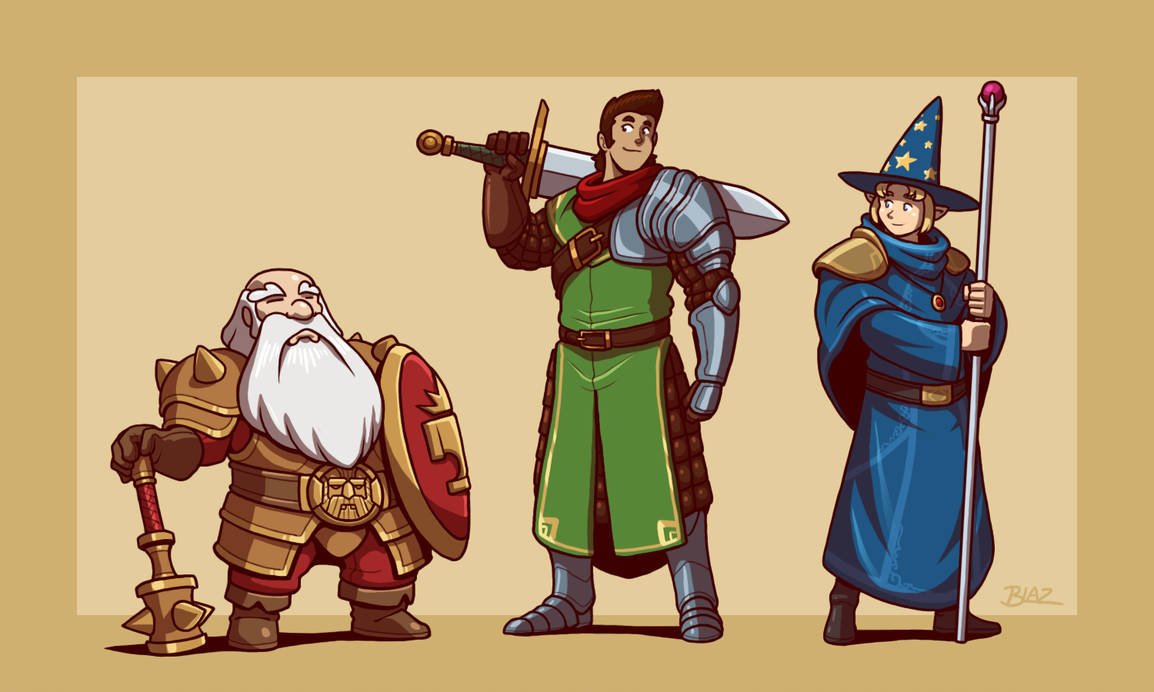When your characters aren’t roleplaying or in combat, they’re probably facing a number of other obstacles impeding the progress of their objectives. Or they’re complaining about Game of Thrones in vague terms so as to not spoil it for those who aren’t caught up. For the purpose of today’s blog, we’re going to broadly categorize these obstacles as challenges. They aren’t skill challenges, mind you, or hazards, or anything that implies a mechanical category in which the solution can and must be found.
One of the most frustrating situations for both player and us GMs is the dead end. Everyone just wants to advance the plot and the action, but there is no clear way to do so. Too often, a session deadends because a challenge had few or only one solution and no idea how to handle failure to accomplish or even determine that solution.
Challenges are best when there is a spectrum of solutions, which a variety of characters can approach each in their own way. Not all solutions need to be equally effective, nor do they all have to yield the same results. The perfect example of how to craft a challenge in Pathfinder 1e that you should all look to when designing your own, Game Masters is the locked door.
Assuming you don’t have access to a key (we’ll get back to that key later), how does one get through a locked door? You could pick the lock. You could smash the door. You could try magic. Without even going into mechanics, we’ve found three logical (for a world with magic) angles from which to approach this challenge. We’ve also found ways in which the four classic classes (cleric, fighter, rogue, and wizard, with only the cleric being debatable) can approach this challenge. Each approach has benefits and drawbacks:
- Pick the lock
Benefit: Costs no resources, makes no noise, takes 1 round, can be retried.
Drawback: Requires a trained skill and special tools.
- Smash the door (Strength check)
Benefit: Requires no skill, takes less than 1 round
Drawback: High DC, noisy
- Smash the door (with damage)
Benefit: Requires no skill, anyone who can deal damage can contribute
Drawback: Takes multiple rounds, very noisy
- Cast a spell
Benefit: Makes little noise, takes 1 round
Drawback: Requires access to the right spell, costs the use of a spell, not guaranteed
Although there is no cleric-specific solution, they can contribute by casting spells that improve ability or skill checks, and they are usually hardy enough to smash a door down if it comes to it. The ideal solution, picking the lock, is limited to a specific build. But that limitation is not a roadblock, and that’s what makes this an exemplary challenge. Any party can overcome it, without compromising its in-world purpose.
There is even the additional approach of tracking down someone with a key. A ranger could use Survival to determine the route of a guard with access to this door. A bard could leave the door, Gather Information in a nearby town, and charm the keyholder. A psychic could cast locate object. Most characters can approach this challenge class-first and find a fulfilling way to attempt to overcome it, with various logical repercussions.
Imperfect
Compare this to the chase rules, where logic, character, and circumstance are narrowed down to minimal, immutable options. Can’t climb the fence or acrobatics across the clothes line? There is little else you can attempt to do without either diving deep into metagame thinking or approaching the obstacles outside the box in a way that negates the purpose of the chase mechanics. Instead of questions like “describe my surroundings” and “can I use this other skill that completely makes sense based on what little I know about this situation?” you have to ask questions like “how does moving an extra card work again?” and “can we never use the chase rules again?”
Failure
In the locked door challenge, failure wasn’t the end. There was always another option, just with different consequences. Those consequences are the stakes of the failure, and, most importantly, include decisions. There’s an audible difference between a table that’s silent because they are mulling over a difficult decision and one that’s trying to come up with direction.
Published adventures often suffer from deadends challenges. Adventure authors need to give us GMs direction on how to overcome a challenge, but word count is at a premium. They can imply that there’s flexibility to the solution beyond what’s printed, but that can run counter to your motivation to buy a published adventure, as well as PFS’ rule to run as written.
One of my favourite PFS challenges in this regard is in the 4–19: The Night March of Kalkamedes by Michael Kortes. The premise of the scenario is that the PCs are following a sleepwalking NPC to figure out where this mystical night summons expects him to go. The challenge in question is a pit in his path. The scenario is opened ended with how the PCs get Kalkamedes across, meaning the players can find mundane solutions like ropes and planks, or dig into their abilities for creative applications.
By contrast, too often the consequence of failure is the same as the result of success. There’s a PFS scenario with a chase scene that stood out for this. Succeed at the chase and the fleeing NPC gives you the information you need to continue the adventure. Fail and you find the fleeing NPC’s dead body, all the information you need to continue the adventure neatly summarized on a note in their pocket. Arriving at the same destination made it a journey for the journey’s sake, and in this case I did not enjoy that journey.
Challenge Design Tips
If you want your challenges to be multifaceted, here are a few things to keep in mind:
- Do not design with rules in mind, design with the world in mind. Back to the chase example, don’t think “I need a DC 15 Climb check, so there’s a fence here” think “I need a fence here, what could that mean for characters who need to be on the other side of it?”
- Have an idea of the best solution, acceptable solutions, and crazy-enough-to-work solution DCs and consequences. Note: You don’t need any examples of these different solutions in mind when designing the challenge, as long as you have an idea of how to apply a player’s actions when your reaction is “That’s a great idea”, “yeah, that could work”, or “…what?”
- Make sure there are stakes that matter. If the villain has a hostage on the other side of the door, don’t have him wait for the PCs to overcome the challenge before factoring the hostage into the situation. Have the wellbeing of the hostage factor into how the PCs approach the challenge.
If you have any fond memories of your players overcoming your challenges in unexpected ways, or if you have any challenges you are particularly proud of, share in the comments below, on our Discord, or other social media.
*I do not apologize for my blanket dislike of the chase mechanics. If you are a fan, all I can say is, sincerely, “How?”








